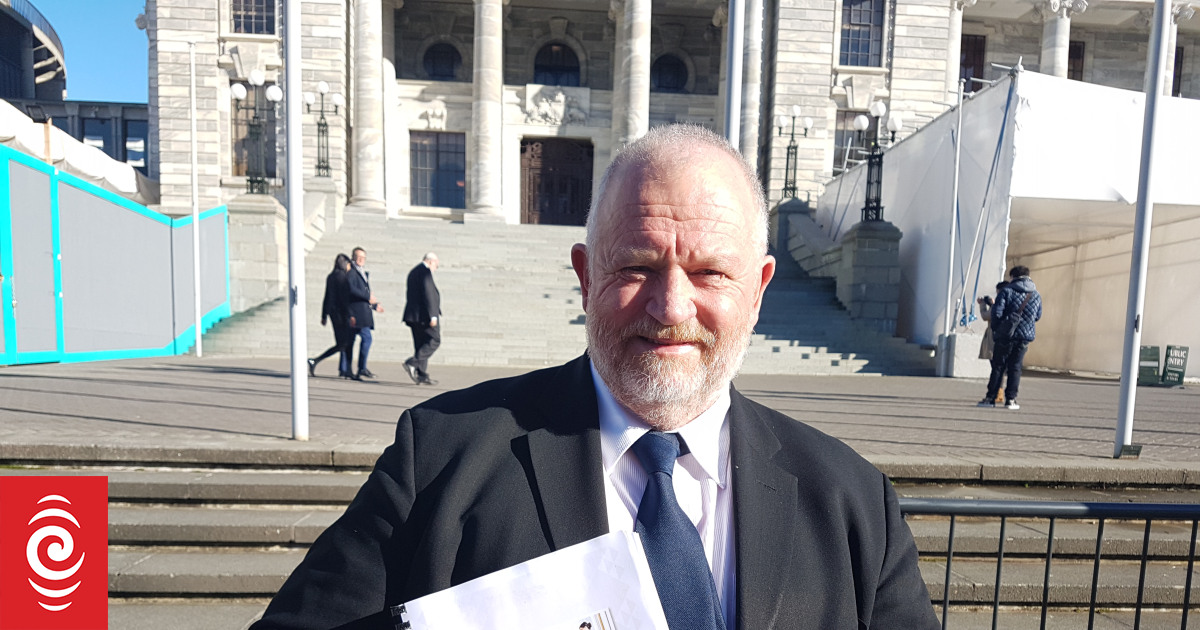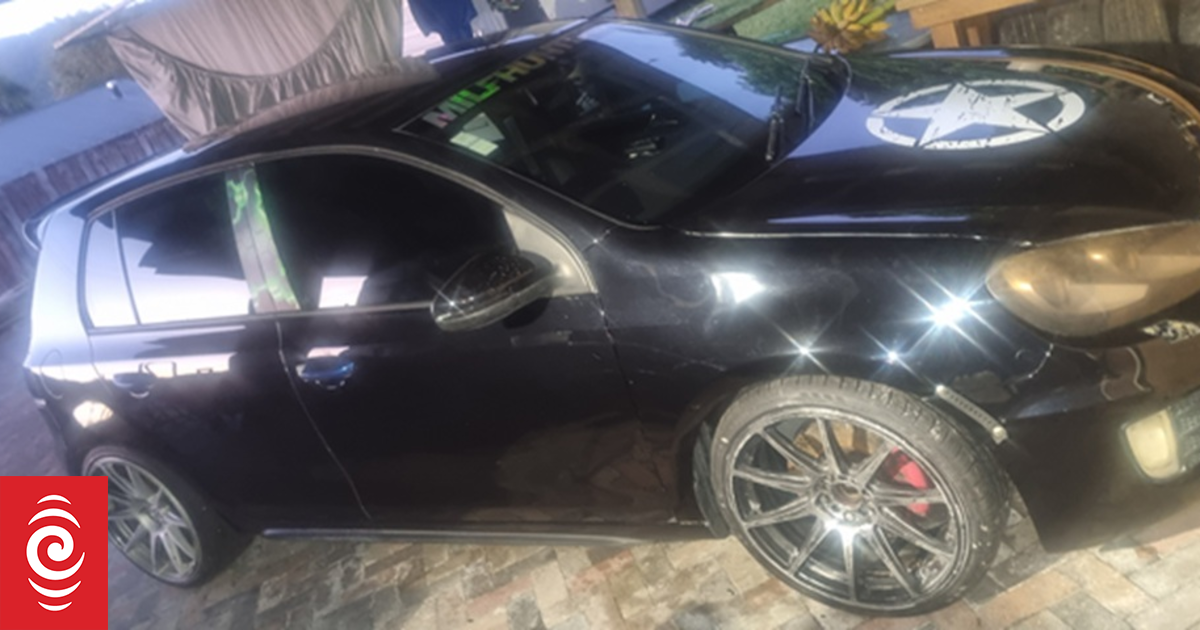Former Te Hiku Revitalisation Project lead Andrea Panther explains plans for a revamped Allen Bell Drive Park to Kaitāia 10-year-old Cullen Waipouri. Photo / Peter Jackson
The departing head of a three-year town beautification project in the Far North has fired a parting shot at “keyboard warriors” who abuse people trying to make Northland a better place without lifting a finger themselves.
Andrea Panther has resigned from her roles as lead of the Te Hiku Open Spaces Revitalisation Project and as chairwoman of the Kaitāia Business Association, saying she made the call to go after she filed a third police report about threats to her safety.
The revitalisation project, which started with a grant from the “shovel-ready” Covid-19 Recovery Fund in April 2020, has seen 80 separate beautification and town improvement projects completed in Kaitāia, Awanui and Ahipara.
Only the Kaitāia Town Square project is still to come.
Advertisement
Two of the police reports — one of which was for a death threat — relate to a sculpture on South Rd, while the third arose from the town square makeover.
Despite that, Panther said the project was “absolutely” worth doing because residents of the three Far North towns now had 80 new assets and attractions to enjoy.
The projects were the work of a team, the Te Hiku Project Working Group, but as the public face of the initiative, Panther copped most of the vitriol.
“It doesn’t seem right when you’re trying to do a beautification project. People just need to focus on the projects, and the fact our community is made up of volunteers. They shouldn’t be firing abuse at people who give up their time to try to make things happen in our town,” she said.
Advertisement
“It’s the keyboard warriors that want to have a go — but you don’t see them standing up or doing anything good for the community. They just sit back and fire abuse. I encourage people to get behind our volunteers, they’re crucial to our wellbeing.”
However, Panther said she realised keyboard warriors did not reflect the views of Te Hiku residents overall.
“I’m very aware it’s a minority that have got to me, and the majority love the work that’s happened.”
/cloudfront-ap-southeast-2.images.arcpublishing.com/nzme/2AZI5RHWR5HAPOKE5G77P45W4E.JPG)
She could not pick a favourite from the 80-odd projects, but said she loved seeing the three new parks busy with families and children.
The playground at Awanui was especially busy because it was near the junction of two highways, but the whale and pump track at Ahipara’s Kororā Park had also proved a hit with local kids.
“I also love the wide shared footpaths that people of all ages are using massively for exercise, like Te Ahu Loop path and the Foreshore Rd path, and all the cultural artworks. They have some amazing stories behind them.”
Other projects included alley beautification in Kaitāia, a boardwalk near Baker Man in Awanui, carparks in Awanui and Ahipara, picnic tables and barbecues at Ahipara, a fence at Awanui to protect pensioner flat residents and digital signs in Kaitāia and Ahipara.
“There’s a whole lot of stuff people probably don’t realise is part of our project. That’s 80 new things in our area that people can enjoy.”
/cloudfront-ap-southeast-2.images.arcpublishing.com/nzme/TV4AX7X47NHALN2ZDNVTPYNFWU.JPG)
Controversy over the South Rd pou came down to a misunderstanding over their purpose, with Panther saying they were intended simply as artworks sharing stories of the area.
People had also complained about a lack of consultation — “There was so much consultation!”, she said — and she had copped abuse from both sides of the racial divide, with some residents penning outraged letters claiming she was turning Kaitāia into a Māori town, while others had accused her of being a “white transient”.
Advertisement
While these days Te Hiku was home to many cultures, the project focused on its long-standing Māori, European and Dalmatian heritage.
“The whole purpose is to create a sense of place and identity,” she said.
/cloudfront-ap-southeast-2.images.arcpublishing.com/nzme/XCJVBUESPFGZ5EVCU2P2HXMAYA.JPG)
The project has collected a swag of national and international awards over the past three years.
Perhaps the biggest accolade came at the International Association for Public Participation conference last year in Australia, where the project landed the Community Development Award, the Australasia Core Values Award, the Australasia Project of the Year and the International Project of the Year.
It was never about awards, however.
“Those things just happened,” Panther said.
Advertisement
Her job isn’t entirely over — with the Government’s revitalisation money now used up, she’s applying for community board funding for storyboards to explain the tales behind the cultural artworks in each town.
Someone else, however, will have to take the lead on the challenging Kaitāia Town Square project.
/cloudfront-ap-southeast-2.images.arcpublishing.com/nzme/6KYTYHVIHVHSNH7HCTEP4CHIZQ.JPG)
After four years at the helm of the business association, she had always intended to step down at the September 20 meeting. Shirley Neho will fill her shoes following her early departure.
Kevin Hoskin, of Hoskin Civil, will stand in as the revitalisation project lead.
Panther said she would dedicate her newfound free time to her growing number of grandchildren. She would continue working for Hoskin Civil, but in a different role.
She had no regrets after a “very busy” and sometimes difficult three years.
Advertisement
“The benefits have outweighed the negatives. I just need to step back and let someone else stand up.”
/cloudfront-ap-southeast-2.images.arcpublishing.com/nzme/PZRODFMAEFEPLCD3UUGCNAQG4Q.JPG)



